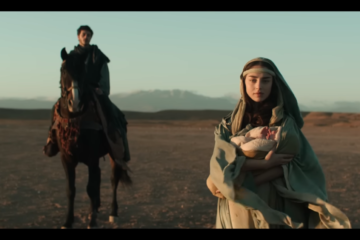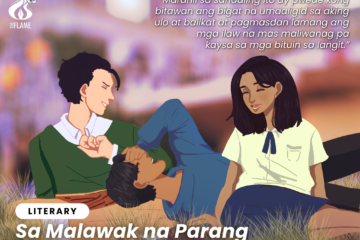by CZERIZHA S. ADZUARA and VON ZYRON P. ALIMORONG
THE VALUE of heritage flows deep within a family. Whether such an inheritance is material or tradition, Filipino families give utmost importance and sentiment to it.
However, treasures are not the only form of heritage handed down from one generation to another, as sometimes this could also be preserving simple familial memories that become part of each member’s identity.
Facing challenges and strengthening family ties is what theater guild Artistang Artlets presented through their one-act play Pamana. It was directed by Isabelle Laurente and it was broadcasted on the group’s official Facebook page last Oct. 28 and Nov. 5 as part of its 42nd season.

Written by Aaron Del Rosario and Kevin Christian Crisolo, Pamana unfolds the relationship of the three Alfaro siblings through a single video call. It begins when the second child, Jhe (Alea Loquinario) summons Kuya Matmat (William Dexter Mamuyac) and her younger sister Ikay (Agnes Ynah Martinez) for an online kumustahan or catching up.
During their conversation and recollection of childhood memories, a sudden tension builds between the eldest and the second child. It appears that Matmat is responsible for Jhe’s current predicament with regard to their family beach house. Their parents titled the property to Jhe.
As an engineer, she ought to renovate the cradle of their good childhood memories. But with Matmat and his business’ financial constraints, he encourages his two sisters to give up and sell the beach house.
The play set up an artistic use of a video call screen to establish its setting. It enabled viewers to understand the medium used for the drama fully. Indeed, Artistang Artlets have transformed the limitation of conducting a play virtually into a powerful storytelling device, and it literally and metaphorically highlighted the distance that separates the three siblings.
However, sudden glitches and random cuts seemed to have found their way past the editing room. Though these are attributes that help sell realism, as these things often happen in the real world, these might also take viewers out of the story.
Furthermore, the use of background music also aided the atmosphere of the play. As the exchange between the siblings gets heated, there was a transition from mellow melodies to a contentious rhythm.
Regarding the characters, Matmat conveyed the uptight and authoritative yet passive kuya among the three. This was brought upon their exclusive upbringing, which was fleshed out amid the sibling’s storytelling of their past.
Although Mamuyac played his part well enough to deliver the story, it was unfortunately not enough to truly engross the viewer and there is still some room for improvement. Mamuyac’s portrayal of his character’s anger and pain seemed more that of a pissed-off best friend than a pissed-off brother.
Moreover, sibling conflicts are oftentimes characterized by an assertion of authority with much less reservation. Older brothers, in particular, often try to dominate their younger siblings to establish superiority in an argument. But Mamuyac’s portrayal of it seemed not to reflect it well, as there were instances when he stood up and looked at a picture frame, which is something that an angry and deeply wounded brother is unlikely to do. However, how he portrayed his character’s worries was noteworthy and commendable.
Jhe, meanwhile, was the formidable and persistent sister while Ikay remains to be the mediator bunso. Consequently, this power dynamic among the siblings in the conflict unveiled their concealed and gradually developed insecurities and trauma.
Both delivered their characters well but with little inconsistencies in their portrayal. Sometimes their actions fitted the character spot-on, giving them more depth, but others did not match what the scene requires. Situations were executed with unnatural actions instead of simpler and much more nuanced gestures.
Despite these notable shortcomings, the actors had their “spotlight moments” where the peak of their skills was on full and powerful display.
The beach house as a pamana did not only reflect the generational trauma within the Alfaro household but also exhibited the complexity of relationships in a traditional Filipino family. This complexity is a byproduct of societal structures that long-predisposed Filipinos to even be in a harsh conflict with their kin over an inheritance.
Above all, Pamana was an excellent depiction of Filipino sibling-adult relationships of healing and reconciliation while at the grasp of what their parents left behind. F



